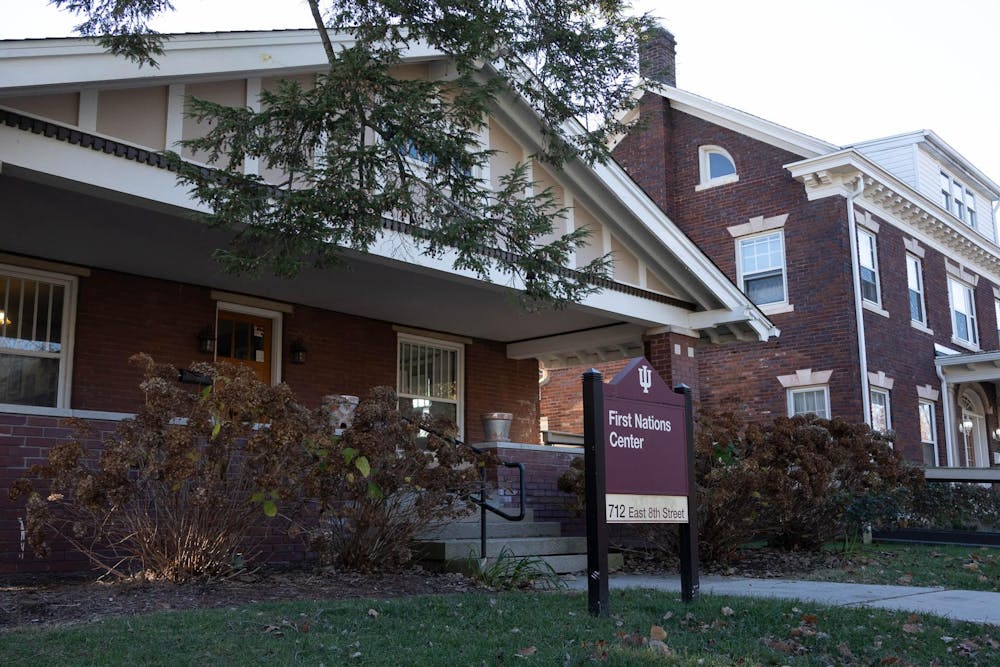In 1990, the Bush administration designated the month of November as what would eventually be called “Native American Heritage Month.” Since then, there have been annual proclamations to allow for the continued celebration of Native American Heritage Month.
Micheal Ing, director of IU’s Native American and Ingenious Studies Program, explained why this was an impactful effort.
“The overall results of the month are helpful in terms of providing opportunities for people to learn about marginalized cultures,” Ing said. “Seeing another culture can be helpful to see things from another perspective. You can use that even to work on yourself or reflect on your own culture.”
While there is programming during Native Heritage Month across the community that aids in spreading culture, Ing said people can take their education a step further by visiting the official sites of Native American tribes or finding authors who come from those communities and reading their stories.
IU, in particular, was built on the Indigenous and ancestral homelands of the Miami, Delaware, Potawatomi and Shawnee people. Colonization is what led to the displacement of these Indigenous populations. Losing this land resulted in a loss of cultural identity, as tribes relied on their homelands for ancestral burials and religious ceremonies.
In the fall of 2022, Ing released an article called “Ka Pae Hawaii: Charting Indigenous Community in a Multi-Centered World” in the Journal of Native American and Indigenous Studies. He focuses on the uprooting of living outside native homelands, specifically as a Native Hawaiian.
“Diaspora is a word that became popular in talking about the ways in which Jewish people have been ostracized from their homeland. They’re disenfranchised from it, but want to return in certain kinds of ways,” Ing said. “And so, diaspora Hawaiians are less connected to their culture or to their lands. There can sometimes be a second-class treatment of people living in that diaspora from Hawaiians living in Hawaii.”
This disconnect from ancestral land and heritage can be seen across the United States. Currently, Native tribes have lost almost 99% of the land they historically occupied. However, there are still 574 federally recognized Native American tribes that reside in the U.S., two of which are in Indiana. These tribes are the Pokagon Band of Potawatomi and the Miami Tribe of Oklahoma. In efforts to celebrate these tribes and other Native American ancestry, the First Nations Educational and Cultural Center (FNECC) at IU organized programs throughout this month.
They kicked off November with a presentation by Kalehua Krug, a professor at the University of Hawaii at Mānoa, about traditional Hawaiian tattoo practices, and hosted more guest speakers throughout the month. The center is wrapping up with one more event.
On Nov. 21, artist Bobby Silas will visit the Eskenazi Museum of Art for an artist talk. Silas is an artist in residence at the Eiteljorg Museum in Indianapolis and is participating in classroom, library and senior center visits throughout his residency.
Silas’s origins trace back to the Hopi Native American Tribe and sovereign nation located in northeastern Arizona. His art focuses on the revival of Sikyatki pottery, a pottery method that originated in a Hopi village. His pieces are particularly inspired by Sikyatki polychrome and Jeddito black-on-yellow pottery. These pieces also frequently feature patterns of heads, beaks, wings and bird feathers.
The event will begin with a reception from noon to 1 p.m. at the Simpson Center for Education Lobby, followed by the artist talk and Q&A discussion with Silas in the Martin Commons until 2 p.m. From then until 4 p.m., there will be a pottery viewing and an art-making activity.
Additionally, the U.S. Department of State is hosting a virtual panel featuring Civil Service and Foreign Service employees of Native American Heritage from 4-5 p.m. on Nov. 22.
While Native Heritage Month is almost over, the FNECC arranges many programs and events, such as guest speakers, film showings, design displays and more throughout the year. The center’s mission, according to their website, is to inspire and encourage Native American and Indigenous students while also educating the rest of the IU community about Native American culture.




